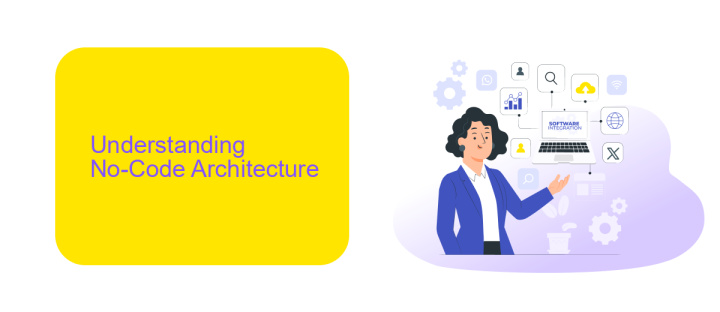No-Code Architects
In the rapidly evolving digital landscape, No-Code Architects are emerging as pivotal figures, enabling businesses to innovate without traditional coding. By leveraging intuitive platforms, these professionals empower organizations to create sophisticated applications and workflows, democratizing technology and accelerating growth. This article explores the role, skills, and impact of No-Code Architects in shaping the future of tech-driven enterprises.
Introduction
No-Code Architects are revolutionizing the way businesses approach software development. By leveraging no-code platforms, these professionals can create complex applications without writing a single line of code. This democratization of technology allows for rapid prototyping and deployment, enabling companies to stay competitive in an ever-evolving market.
- Rapid development and deployment
- Cost-effective solutions
- Empowerment of non-technical staff
- Enhanced collaboration and innovation
One of the key aspects of no-code development is the ability to integrate various services seamlessly. Tools like ApiX-Drive facilitate these integrations, allowing businesses to connect different applications and automate workflows effortlessly. By harnessing the power of no-code platforms and integration tools, No-Code Architects are paving the way for a more agile and innovative future in software development.
Understanding No-Code Architecture

No-code architecture is a paradigm that enables individuals to design and deploy applications without writing traditional code. This approach leverages visual development tools, drag-and-drop interfaces, and pre-built templates to simplify the creation process. By abstracting complex programming tasks, no-code platforms democratize software development, allowing non-technical users to bring their ideas to life. This shift not only accelerates the development cycle but also reduces dependency on specialized developers, fostering innovation across diverse industries.
One of the key aspects of no-code architecture is the seamless integration of various services and APIs. Tools like ApiX-Drive facilitate this by providing an intuitive platform for connecting different applications and automating workflows. ApiX-Drive allows users to set up integrations without coding, enabling the synchronization of data between multiple systems effortlessly. This capability is crucial for building robust, interconnected applications that can adapt to evolving business needs. By leveraging such tools, no-code architects can create sophisticated solutions that enhance operational efficiency and drive growth.
Benefits and Use Cases

No-Code Architects are revolutionizing the way businesses approach software development by enabling non-technical users to build and deploy applications without writing a single line of code. This democratization of technology allows for rapid prototyping, reduced costs, and increased innovation across various industries.
- Rapid Prototyping: No-Code platforms allow for quick development and testing of ideas, significantly reducing the time to market.
- Cost Efficiency: By eliminating the need for specialized developers, businesses can save on labor costs and allocate resources more effectively.
- Empowered Teams: Non-technical team members can contribute to the development process, fostering a more collaborative environment.
- Integration Capabilities: Tools like ApiX-Drive enable seamless integration with various services, enhancing the functionality of No-Code applications.
- Scalability: No-Code solutions can easily scale with the growth of the business, ensuring long-term viability.
These benefits make No-Code platforms an attractive option for a wide range of use cases, from small startups looking to validate their ideas quickly, to large enterprises seeking to streamline their operations. With the aid of integration services like ApiX-Drive, businesses can further enhance their No-Code applications, ensuring they remain agile and competitive in an ever-evolving market.
Challenges and Limitations

No-Code Architects face several challenges and limitations in their work. One of the primary challenges is the lack of flexibility compared to traditional coding methods. While no-code platforms offer a wide range of functionalities, they often fall short when it comes to highly customized solutions.
Another significant limitation is scalability. No-code tools may struggle to handle complex, large-scale projects, which can hinder the growth of a business. Additionally, security concerns can arise, as no-code platforms may not provide the same level of security as custom-coded solutions.
- Limited customization options
- Scalability issues
- Potential security vulnerabilities
- Dependence on platform providers
Integrating various services and applications can also be challenging. While tools like ApiX-Drive help streamline integrations, they may not cover all specific needs or provide the required level of customization. Despite these challenges, no-code platforms continue to evolve, offering more advanced features and better security measures.
Future of No-Code Architecture
The future of no-code architecture is poised to revolutionize how businesses approach software development and digital transformation. As technology advances, no-code platforms will become even more sophisticated, enabling users to create complex applications with minimal technical expertise. This democratization of software development will empower a broader range of individuals and organizations to innovate and solve problems more efficiently. Moreover, the integration of artificial intelligence and machine learning into no-code tools will further enhance their capabilities, making it easier to automate processes and analyze data.
One significant aspect of the future no-code landscape is the seamless integration of various services and applications. Tools like ApiX-Drive will play a crucial role in this evolution by simplifying the process of connecting different software systems. ApiX-Drive allows users to set up integrations without writing a single line of code, streamlining workflows and enhancing productivity. As more businesses adopt no-code solutions, the demand for such integration services will grow, fostering a more interconnected and efficient digital ecosystem.
FAQ
What is a No-Code Architect?
What are the benefits of using no-code platforms?
How do No-Code Architects handle integrations with other systems?
Can no-code solutions scale for enterprise-level applications?
What skills are essential for a No-Code Architect?
Time is the most valuable resource for business today. Almost half of it is wasted on routine tasks. Your employees are constantly forced to perform monotonous tasks that are difficult to classify as important and specialized. You can leave everything as it is by hiring additional employees, or you can automate most of the business processes using the ApiX-Drive online connector to get rid of unnecessary time and money expenses once and for all. The choice is yours!

